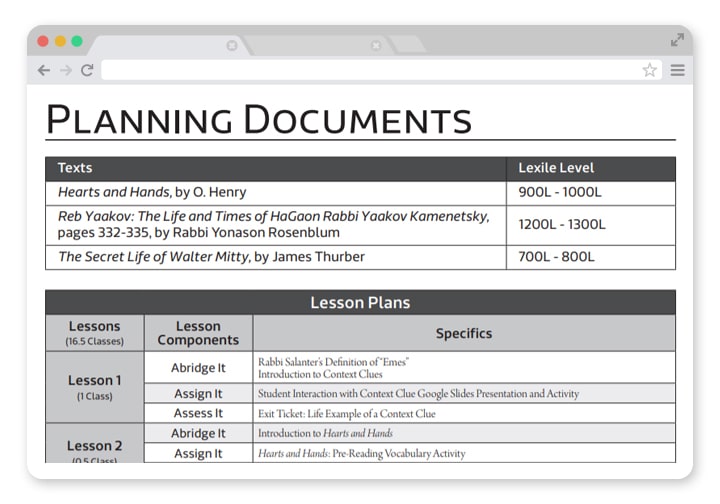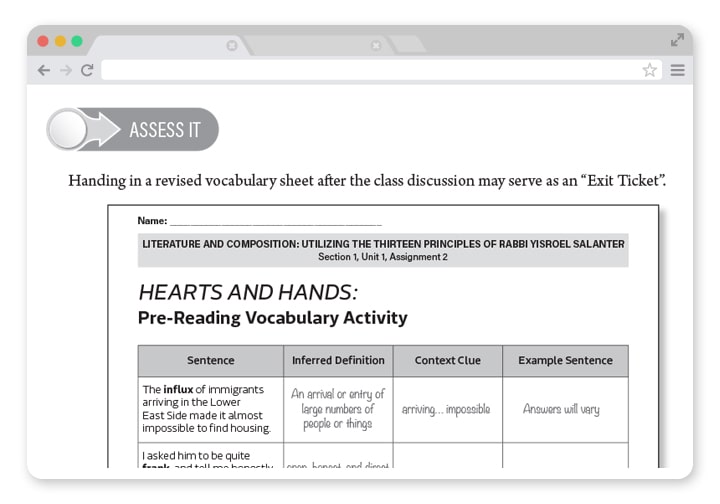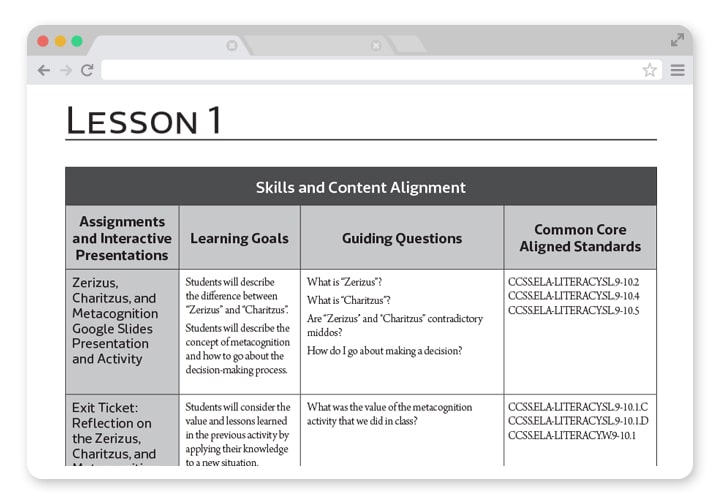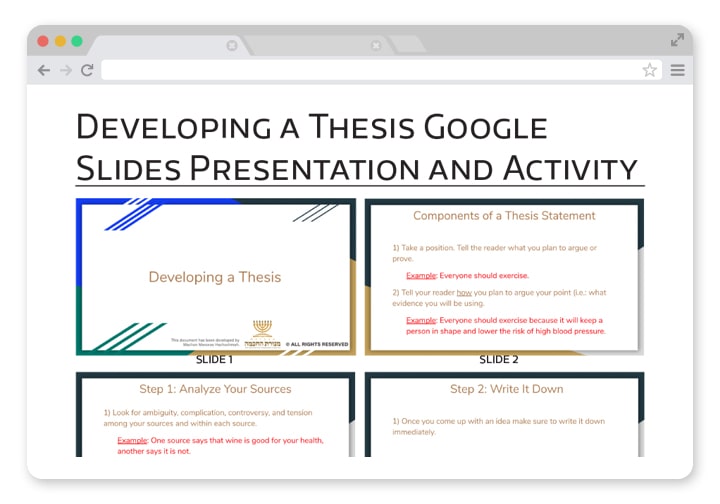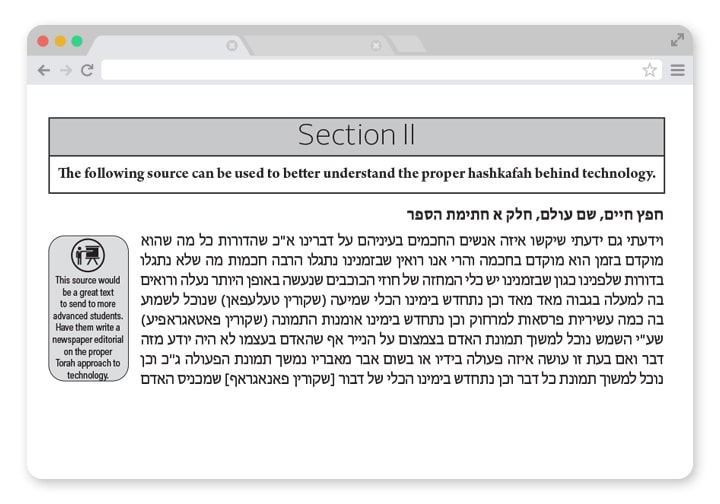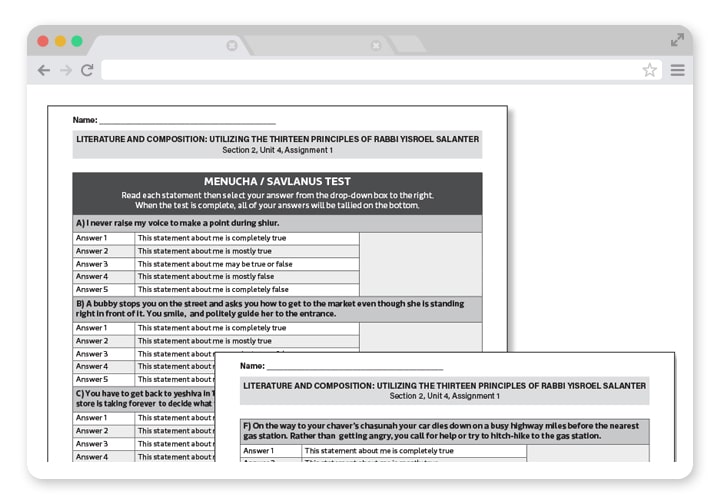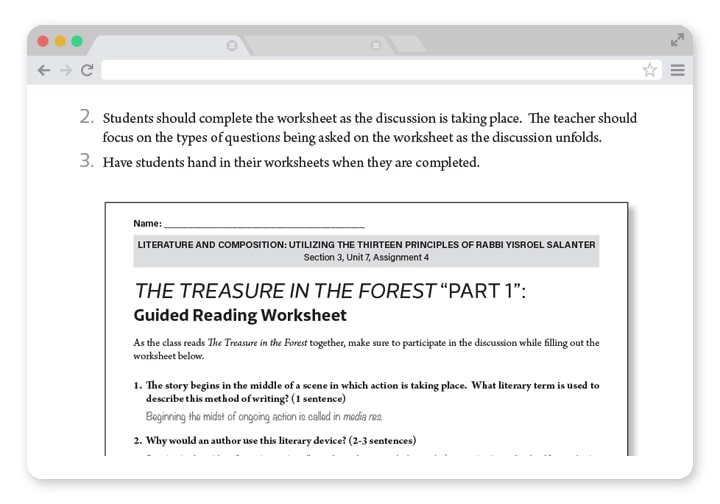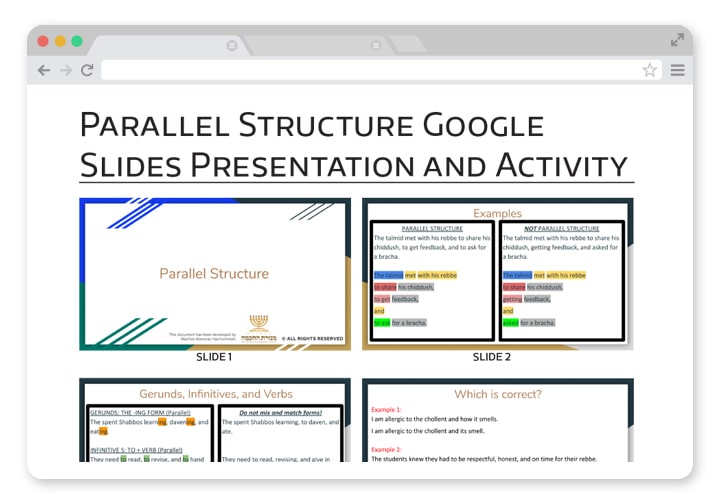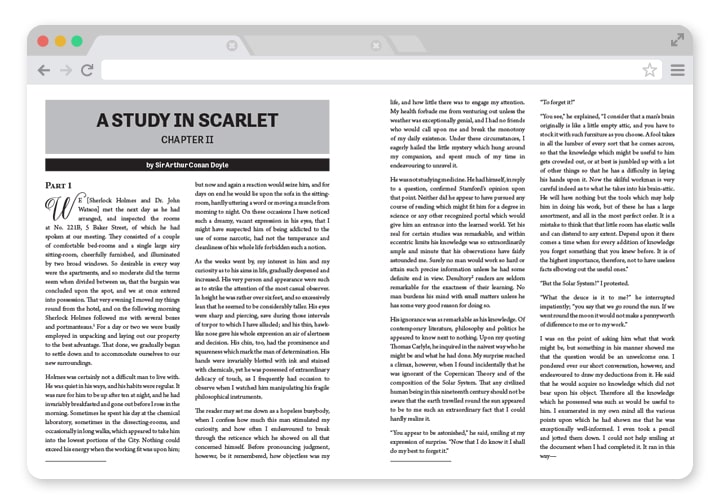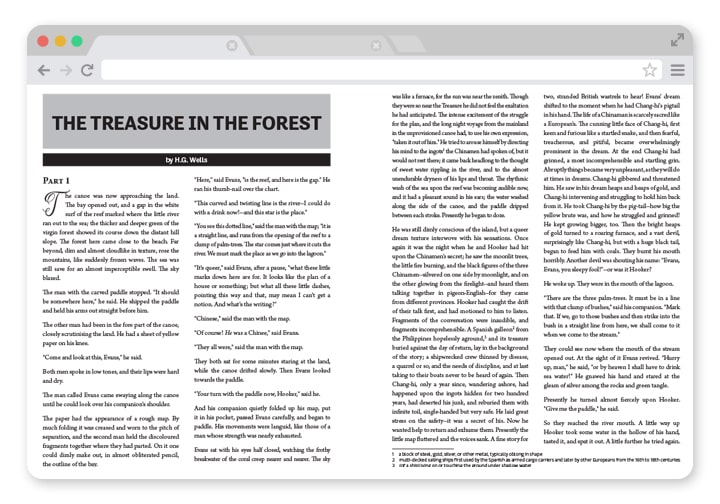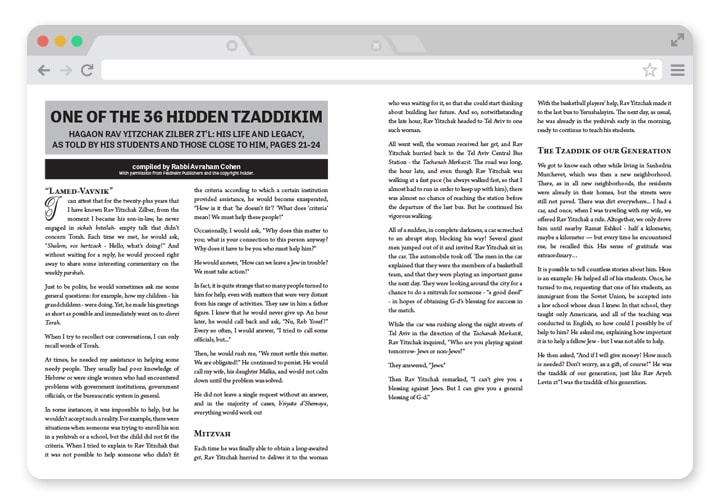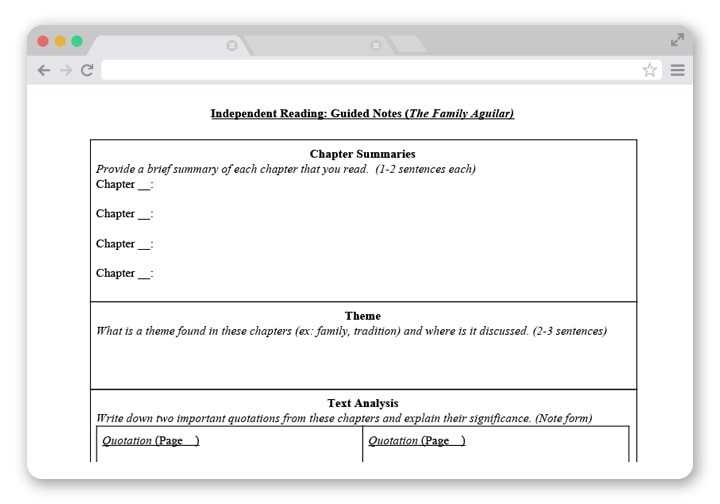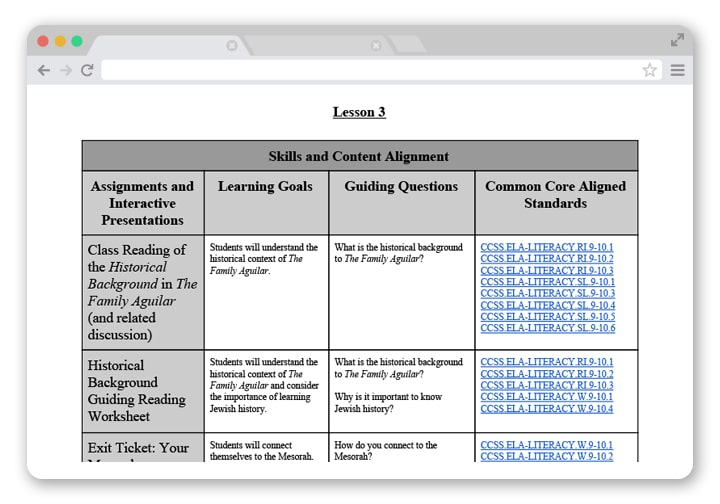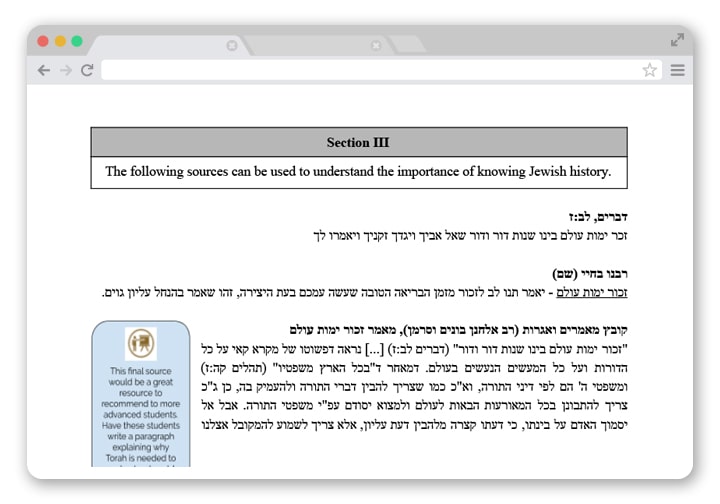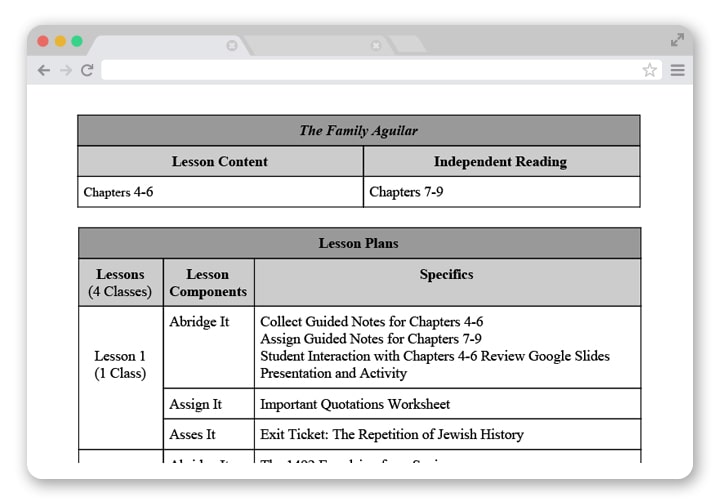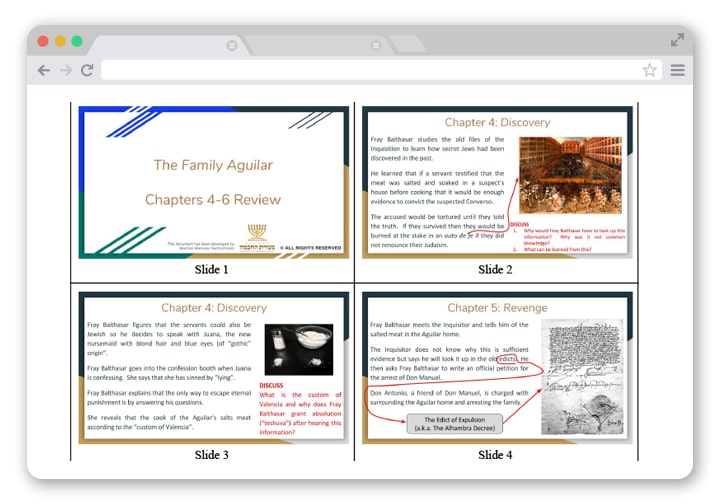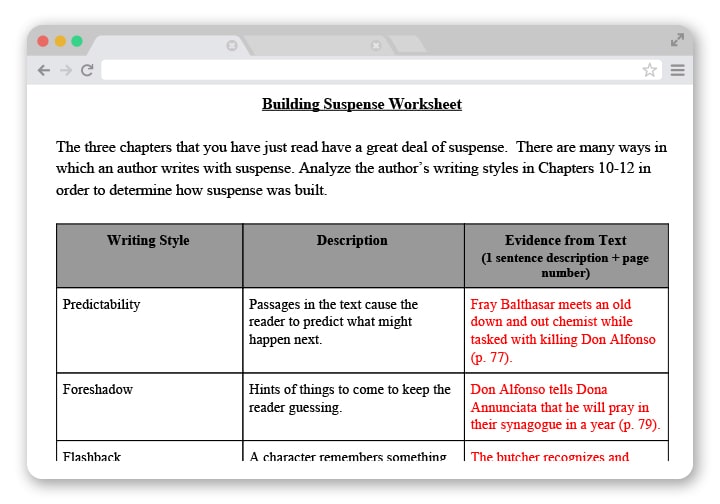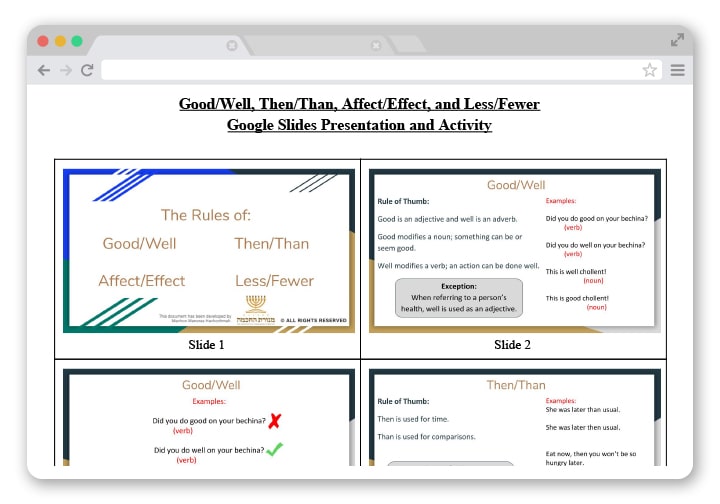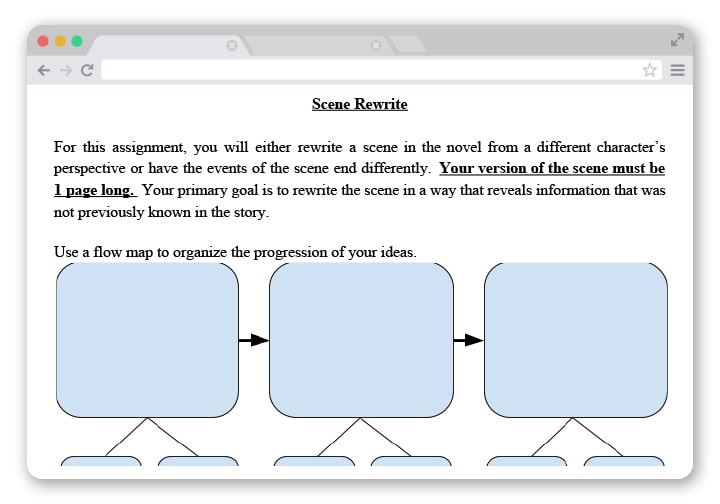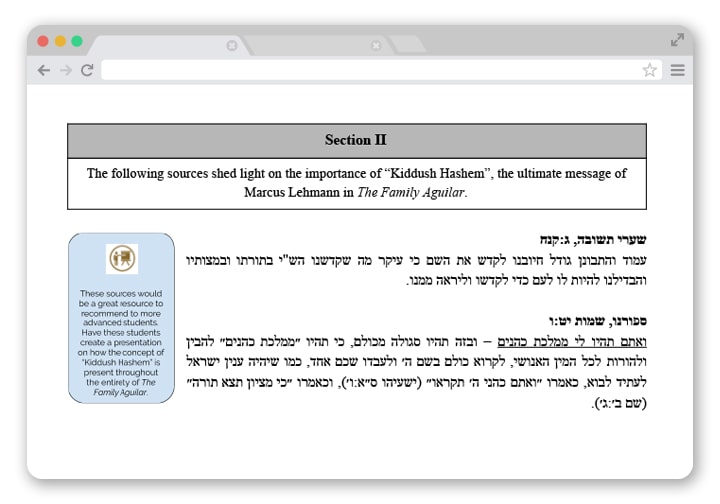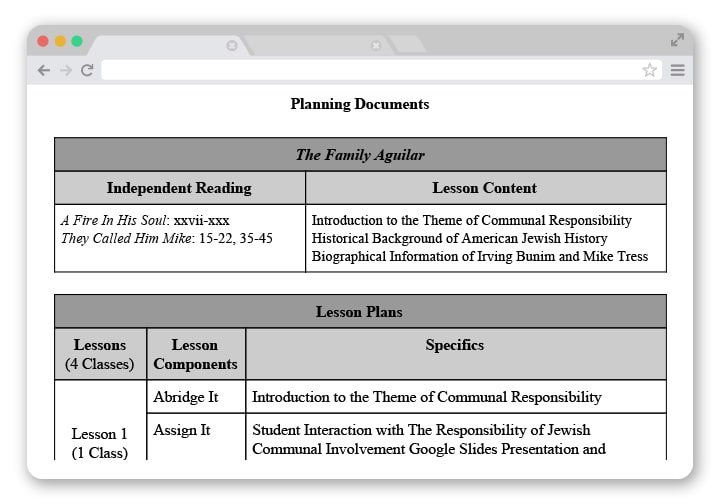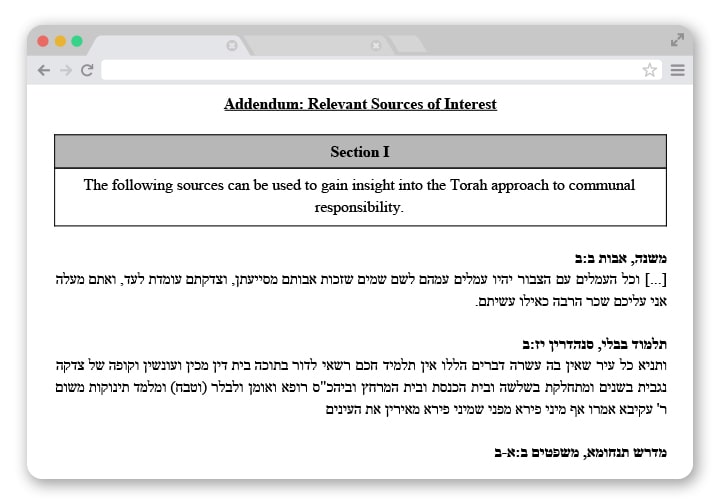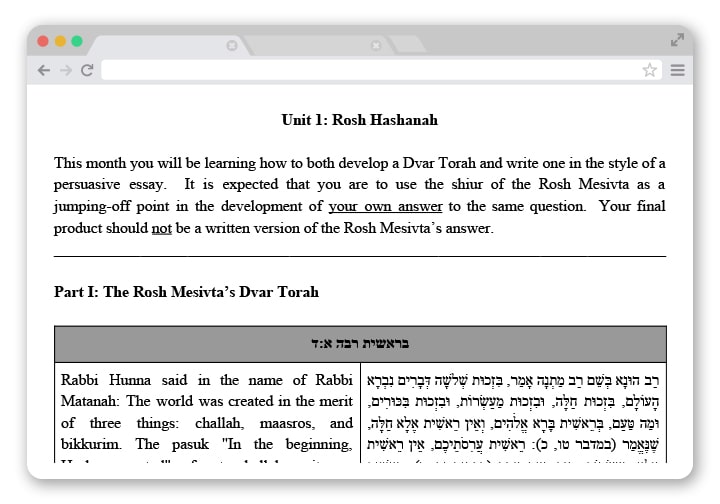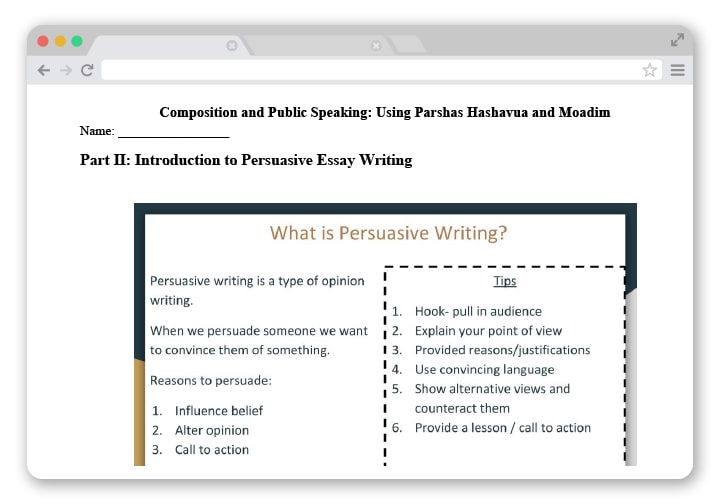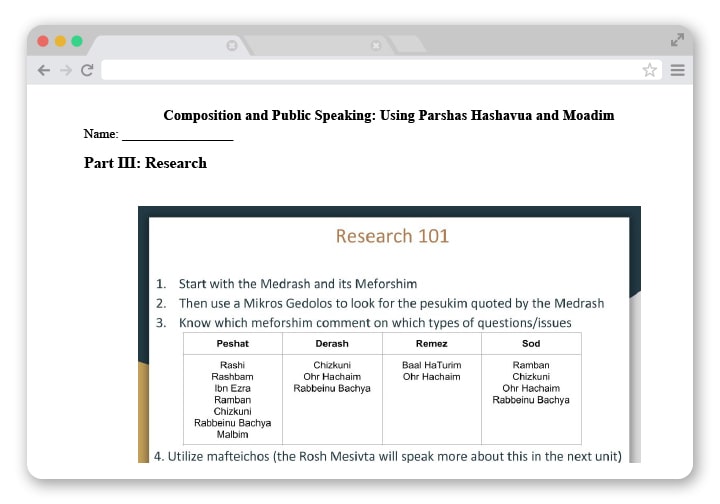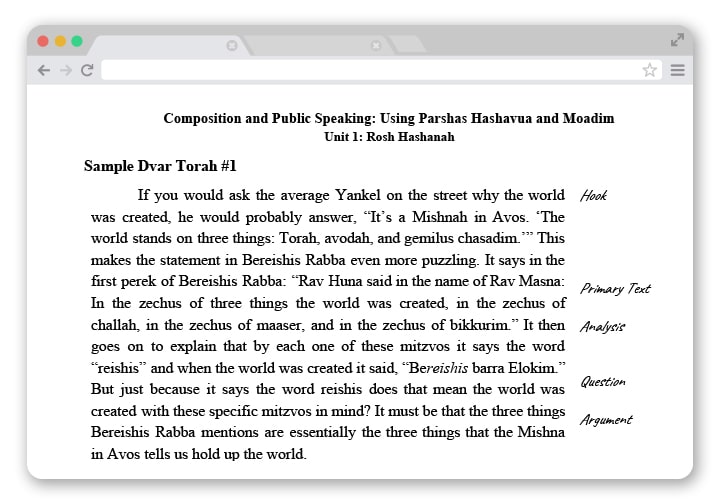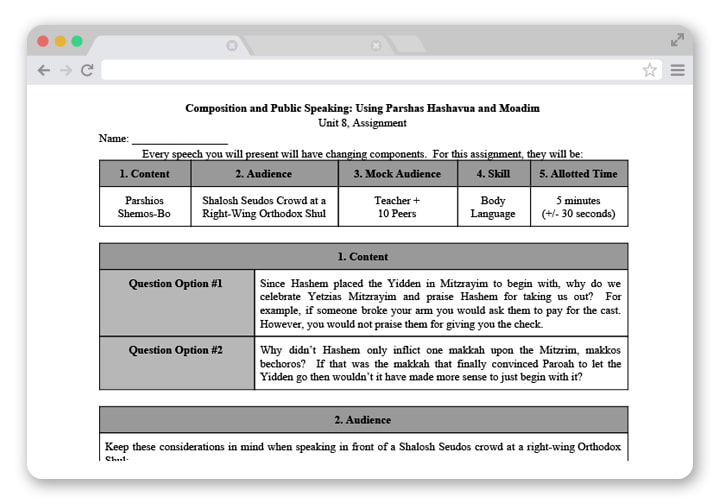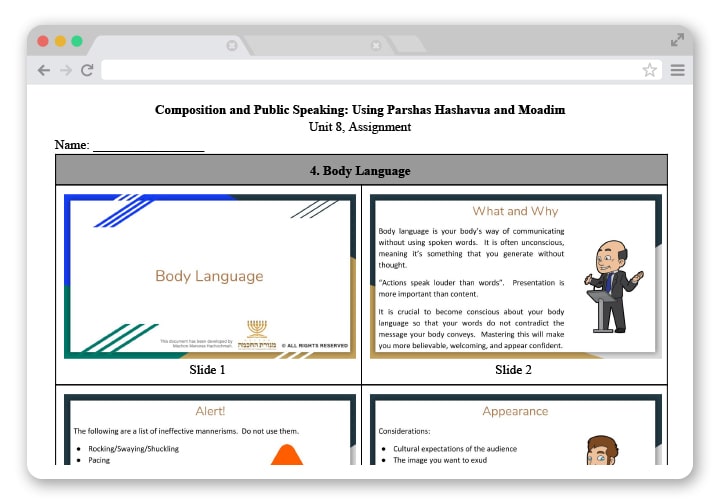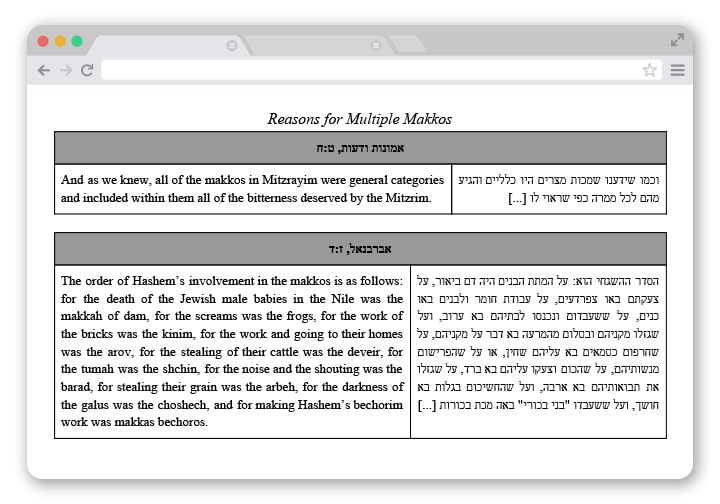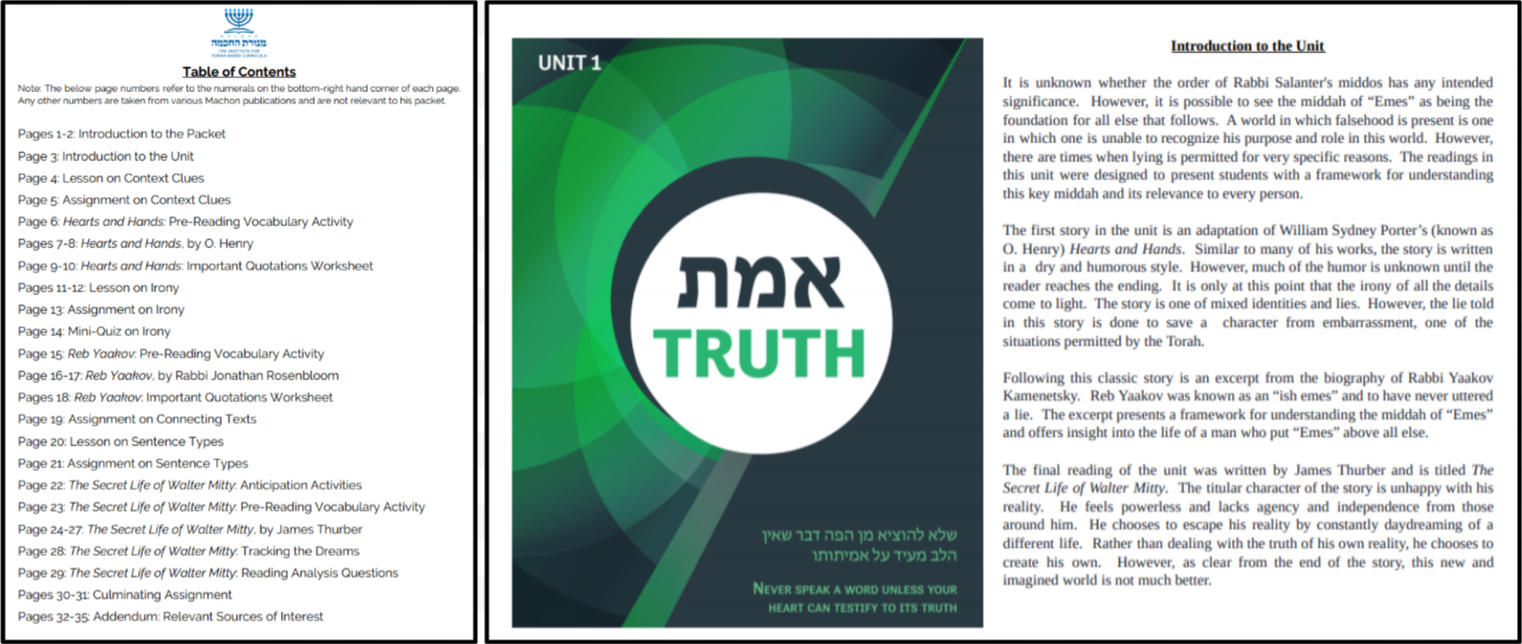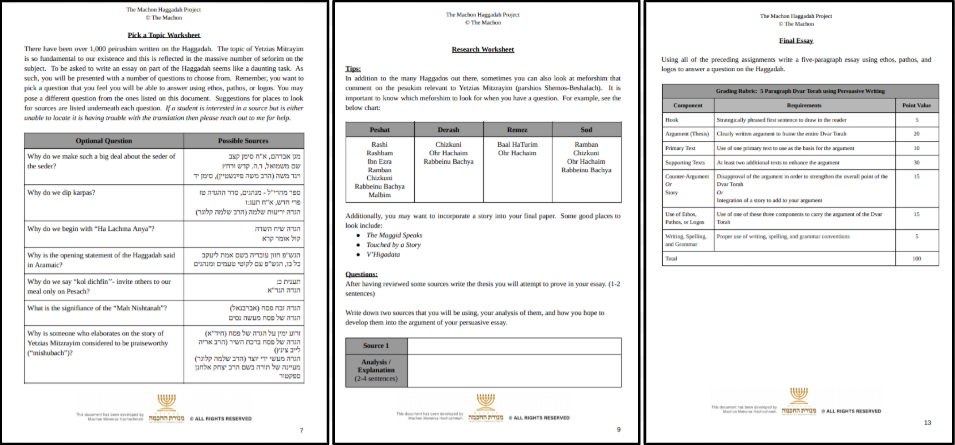CURRICULA
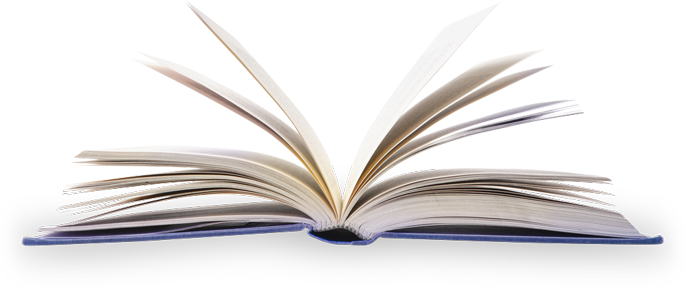
Teachers must ensure that students are constantly engaged, allowing them to interact with material as opposed to only being presented information in a frontal manner. Therefore, every lesson plan designed by the machon follows the ‘Abridge It. Assign It. Assess It.’ model.

Short-term memory (working memory) is limited. Too much information inhibits the ability to complete a task. Instead, when teaching, we have to budget working memory and manage its limitations. Our lessons encourage teachers to take lecture notes, look for the common themes, re-write the key points in a more organized and thematic way, and then only teach one distinct idea at a time. This is also a good skill to give students when they are reading. The lesson plans in our guides use the “Abridge It” time of a class to introduce students to basic ideas, concepts, and themes of a lesson. Students will learn how to anticipate the relevance of their readings and how to contextualize the information that they are taught. Additionally, the teacher will be able to better design and structure classroom discussions while readings texts during this time.
Now that you have taught less information in one class period, you will have time to assign a small project, have a class discussion focused on reading analysis, engage students with vocabulary activities, present an interactive slideshow, have an in-class debate, break up into groups, or assign a research project. This way students can work independently and be focused on the material. For example, if your students are reading a story that has a lot of descriptive languages then have them draw a picture of what they are reading. You can also have students decorate a part of the room to look like what is being described.
This is where “Exit Tickets” come in. For the last five minutes of class have students fill out a ticket with a prompt that asks the student to: provide feedback to the teacher about the class; require the student to do additional synthesis of the days content; challenge the student with a question requiring some application of what was learned in the lesson. Your results will give you insight into how to begin the next days class. Additionally, you will be able to determine which students might need some additional help. Before a student is allowed to leave the classroom, the “Exit Ticket” should be physically handed into the teacher. As well sometimes a document from Assess It may serve as an Exit Ticket. Additionally, every unit will end with a culminating project and every three units will conclude with a comprehensive essay.
COURSES
General Studies with a Torah Perspective
Our curricula allow talmidim to refine their academic skills whole growing
into Bnei Torah who are prepared for success in the 21st century.
Select a course to learn more:
Language Arts
Learning how to communicate with the world through the lens of Torah.
9th Grade Language Arts
LITERATURE AND COMPOSITION UTILIZING THE 13 PRINCIPLES OF RABBI YISROEL SALANTER
Knowing how to properly utilize the English language is crucial to the success of a student. Communicating with others is paramount to leading a successful Torah life in the outside world. Language fluency enables an individual to convey his thoughts in both the written and spoken word. Therefore, the curriculum for this course has been designed to provide a Ben Torah with the tools necessary to successfully communicate in multiple settings.
In this vein, the course associated with the assigned readings focuses on reading comprehension, vocabulary, writing, and grammar. This is accomplished by presenting talmidim with short stories that will allow them to enhance their ability to write, as well as grow as Bnei Torah.
Rabbi Yisroel Salanter (1810-1883) laid out thirteen middos, character traits, for all people to work on in order to improve themselves. They are enumerated by Rabbi Baruch ha’Levi Epstein. Each one of the middos will be the theme of the readings specific to a unit. Each middah/unit provides talmidim with short stories and biographical excerpts that present characters who have these characteristics or struggle with them. As well, a variety of literary devices can be taught through these readings. They include irony, symbolism, allusion, allegory, syntax, and point of view.
Teacher’s Guide Sampler
Course Reader Sampler
- Unit 1: Emes/Truth
- Unit 2: Zerizus/Alacrity
- Unit 3: Charitzus/Diligence
- Unit 4: Menucha/
Tranquility - Unit 5: Nachas/Gentleness, Shetika/Silence
- Unit 6: Seder/Orderliness, Nikayon/Cleanliness
- Unit 7:
Kimutz/Thrift - Unit 8:
Kavod/Honor - Unit 9: Anavah/Humility, Tzedek/Righteousness
10th Grade Language Arts
LITERATURE AND COMPOSITION: RESPONSIBILITY FROM A TORAH PERSPECTIVE
Continuing the underlying importance of teaching how to properly utilize the English language, communicate with others, and lead a successful Torah life in the world outside of the Beis Medrash are themes that present themselves in the 10th Grade curriculum as well. To this end, the course associated with the assigned readings of this course focus on reading comprehension, vocabulary, writing, and grammar.
As Torah yidden, we have many responsibilities. However, often we find ourselves struggling with how to prioritize our family, communal, and business responsibilities with our Torah values. As such, this course has been designed to present readings to bochurim that shine a light on the proper approach to prioritizing these various responsibilities from a Torah perspective.
The following texts are read during each unit of the course:
1. Family Responsibilities: The Family Aguilar, by Marcus Lehman
2. Communal Responsibilities: Selections from A Fire In His Soul Irving Bunim, by Amos Bunim and They Called Him Mike: Reb Elemelech Tress, by Yonason Rosenblum
3. Business Responsibilities: Selected Legal and Halachic Case Studies
Teacher’s Guide Sampler
11th Grade Language Arts
COMPOSITION AND PUBLIC SPEAKING: USING PARSHAS HASHAVUA AND MOADIM
In this course, students will learn how to research, write, and deliver divrei Torah. These divrei Torah will be written using the styles of persuasive, descriptive, definition, narrative, and expository essays. During the second half of the year, students will focus on public speaking using a variety of techniques including body language, storytelling, voice control, silence, audiovisual aids, delivery, use of handouts, stage presence, and audience relations. Different speeches will focus on speaking to different types of audiences.
Every unit will last approximately two weeks. In this time. students will first hear a vort from a Rov, Rosh Yeshiva, or Rebbe that relates to either the current parsha or Yom Tov. Students will then be required to take the same text and question from the vort but develop their own answer, with help from a Language Arts teacher, using one of the writing styles being learned in class.
Course Material Sampler
Mathematics
Chochmatics. Bridging Hashem’s Chochmah and Mathematics.
Preparation of these courses are currently in the development stage.
SAMPLES OF COURSE MATERIAL CURRENTLY BEING DEVELOPED AND IMPLEMENTED AT MESIVTA KESSER TORAH OF BALTIMORE:
9th Grade Algebra
By using Google Sheets, students learn how to compute mathematical formulas that can help them solve problems and learn the skills necessary for future employment.
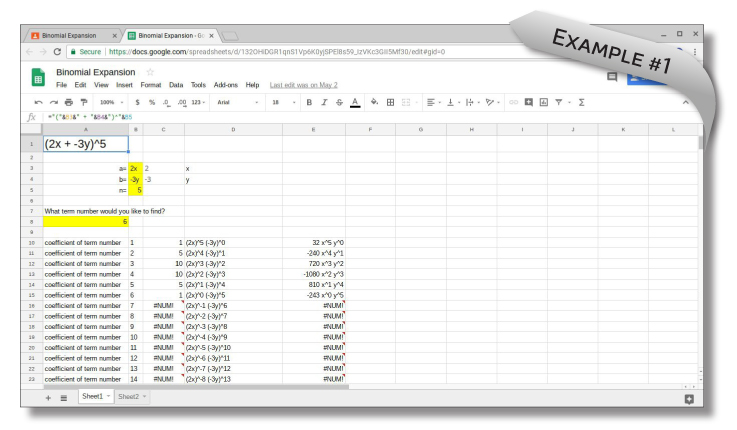
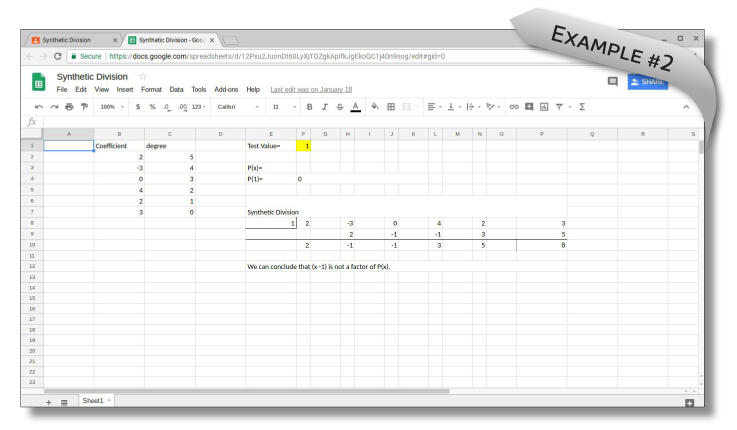
10th Grade Geometry
In addition to learning Geometry, students are able to see how mathematics can connect to their learning in the morning.
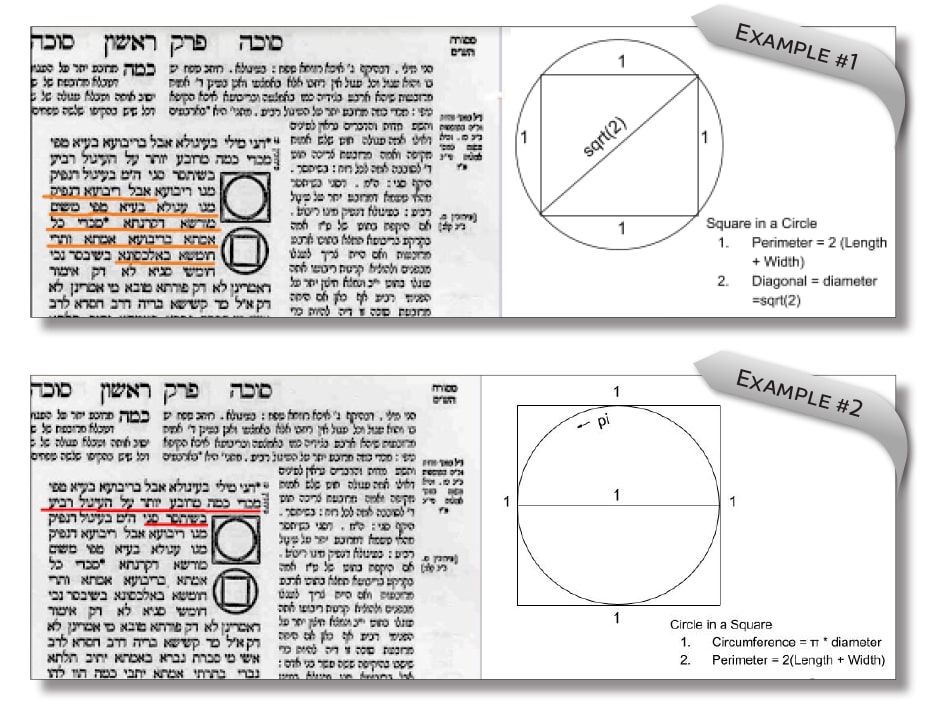
Science
A window into the Niflaos ha’Borea.
Preparation of these courses are currently in the development stage.
SAMPLES OF COURSE MATERIAL CURRENTLY BEING DEVELOPED AND IMPLEMENTED AT MESIVTA KESSER TORAH OF BALTIMORE:
9th Grade Biology
Students are taught to create dynamic and educational presentations using Google Slides. In the example below, the students were asked to present various stages of cell mitosis to their peers. The images were created by students using Google Draw.
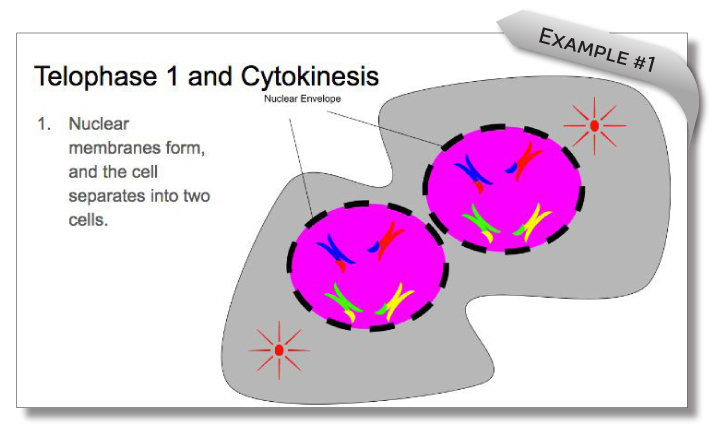
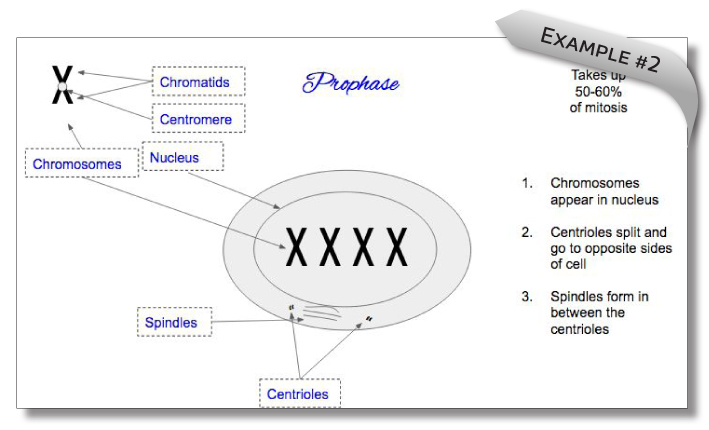
Students are asked to consider niflaos ha’Boreh when learning about all aspects of human life. Below are excerpts from student research papers which tap into this idea.
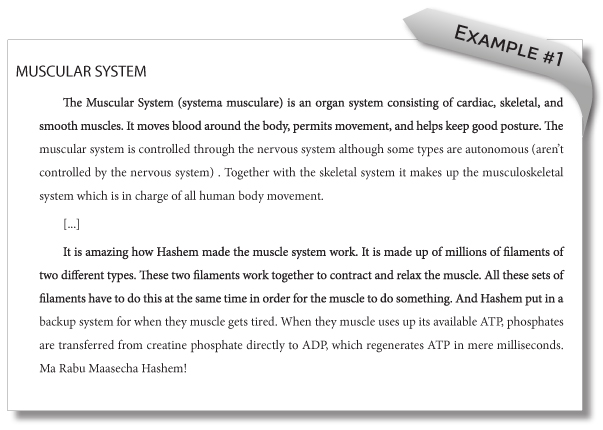
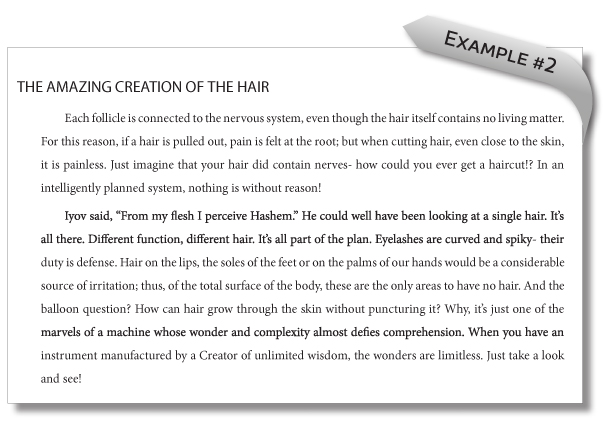
History
The gateway to Hashgacha Pratis
Preparation of these courses are currently in the development stage.
SAMPLES OF COURSE MATERIAL CURRENTLY BEING DEVELOPED AND IMPLEMENTED AT MESIVTA KESSER TORAH OF BALTIMORE:
9th Grade World History
Google Slides are used to display information to students in an organized and dynamic fashion. Below is an example of how we teach history through a Jewish lens. While discussing the reemergence of Greek thought and values during the Renaissance, students are asked to trace the spread of Torah and contrast it with the spread of Greek Wisdom.
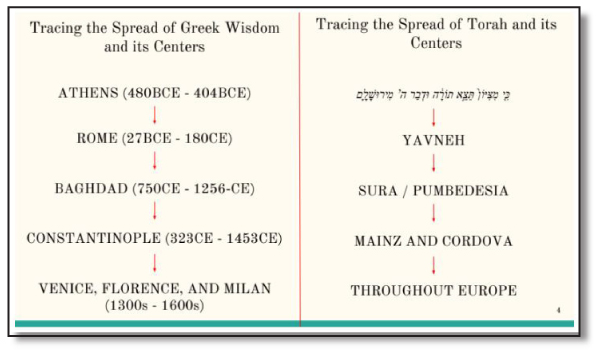
Additionally, when discussing Greek Wisdom, the perspectives of both Rambam and Ramban are taught.
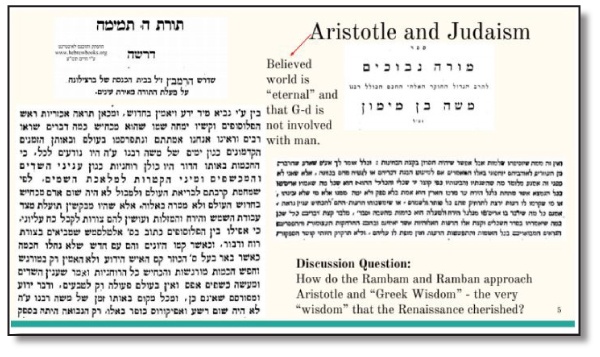
Anytime material can be connected to either hashkafic or halachic topics, the teacher takes advantage of the opportunity. While the classroom is not a place for psak, such conversations are encouraged.
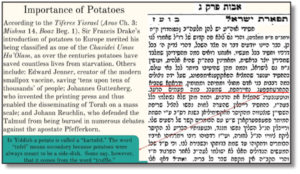
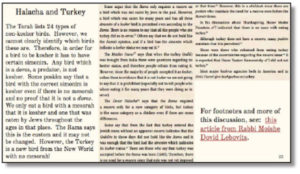
Students are asked to contrast the way of life of non-Jews during history with that of Jews as a way to gain an appreciation for Jewish life. Below is an assignment that touches on this idea.
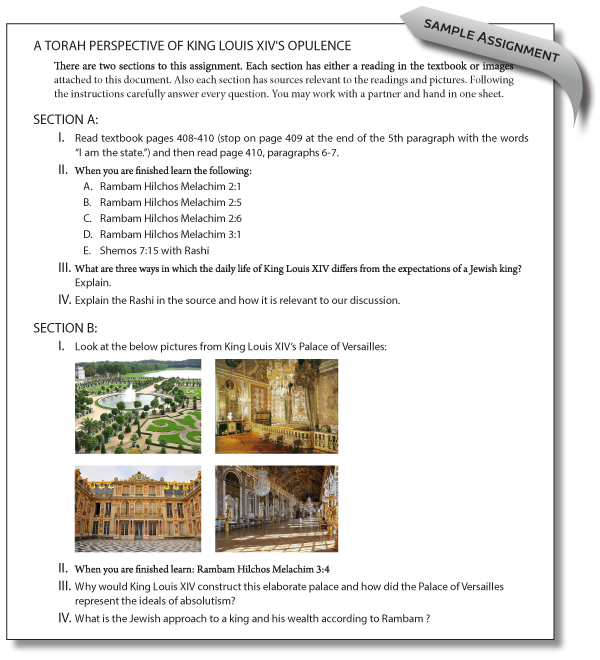
10 ASSIGNMENT TYPES WITHIN MACHON LESSONS
1. Anticipation Activities
These activities introduce students to concepts and themes that will be introduced during the course of a reading.
2. Pre-Reading Vocab Assignments
These assignments ask students to define new words using context clues before a new reading is introduced.
3. Guided Reading Worksheets
As the class reads a text, these worksheets will provide students with guided questions and activities based on quotations.
4. Google Slides Presentations
In order to allow visual learners to comprehend material, interactive slideshows will be used to enhance frontal lessons.
5. Exit Tickets
Intended to be distributed in the last five minutes of class, “Exit Tickets” provide feedback to the teacher about the class and require the student to do additional synthesis of the day’s content. Students may not leave class until their “ticket” is handed to the teacher.
6. Projects
Projects allow students to use the skills and knowledge that they have learned over the course of a unit and use it towards the creation of a creative product.
7. Essays
Some units will conclude by asking students to take what they have learned and present their thoughts in an essays. One type of these essays is called an “Expository Essay”. Students will investigate an idea, evaluate evidence, expound their thoughts, and develop an argument in a clear and concise manner.
8. Independent Reading: Guided Notes Worksheets
As students read independently, they will be required to fill out a document that asks them to summarize what they have read, analyze important quotations, define vocabulary words, ask questions on the text, and anticipate what will occur next in the story.
9. Historical Context Worksheets
In order to understand the historical setting and context of the material being read, worksheets will be provided to introduce students to events relevant to readings.
10. Content and Theme Worksheets
Comprehension of reading material and book themes is crucial to class success. Worksheets will be provided to aid students in grasping this important information.
